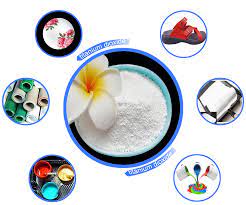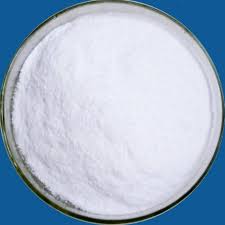When it comes to solvent-based coatings, numerous ingredients play crucial roles in achieving optimal performance and aesthetics. Among these, rutile titanium dioxide (TiO2) has emerged as a key component due to its exceptional properties and versatile applications. In this blog, we will delve into the importance of rutile titanium dioxide in solvent-based coatings and explore its various functions.
I. Understanding Rutile Titanium Dioxide
1.1 What is Rutile Titanium Dioxide:
Rutile titanium dioxide is a naturally occurring mineral that is chemically known as TiO2. It is one of the most commonly used white pigments in the coatings industry due to its high refractive index and excellent light-scattering properties.
1.2 Formation of Rutile Titanium Dioxide:
Rutile TiO2 is formed through a high-temperature process involving the mineral ilmenite. The crystal structure of rutile TiO2 provides enhanced opacity and durability, making it an ideal choice for coatings applications.

II. Opacity and Whiteness Enhancement
2.1 Achieving Opacity:
One of the primary reasons for using rutile titanium dioxide in solvent-based coatings is its ability to provide high opacity. The unique arrangement of particles ensures efficient light scattering, preventing the transmission of light through the coating. As a result, rutile TiO2 enhances the hiding power of coatings, even with thinner film thicknesses.
2.2 Whiteness Enhancement:
In addition to opacity, rutile titanium dioxide significantly contributes to the whiteness of coatings. The pure white color of this pigment allows for the creation of vivid and striking coatings across various substrates. The excellent whiteness also enables accurate reproduction of color shades, making it a preferred choice for achieving consistent aesthetic results.
III. UV Light Protection
3.1 Shielding Against Harmful UV Rays:
Solvent-based coatings that incorporate rutile titanium dioxide benefit from its inherent UV light absorption properties. This pigment effectively absorbs and scatters harmful UV rays, providing protection to the underlying substrate. By incorporating rutile TiO2, coatings can help prevent premature degradation and discoloration caused by UV exposure.
3.2 Enhanced Durability:
The ability of rutile titanium dioxide to shield against UV rays also extends the overall durability of the coating system. By reducing the impact of UV radiation, the pigment helps maintain the integrity and longevity of the coated surfaces, especially in outdoor applications.
IV. Rheology Control and Suspension Stability
4.1 Rheology Control:
Rutile titanium dioxide can be surface-treated to improve its compatibility with solvent-based coatings. Surface treatment modifies the physical and chemical properties of the pigment, enabling better dispersion and control over the rheological characteristics of the coating formulation. This ensures ease of application, improved leveling, and reduced sagging, enhancing the overall appearance of the final coating.
4.2 Suspension Stability:
In solvent-based coatings, maintaining consistent pigment dispersion is key to achieving optimal performance. Rutile titanium dioxide contributes to suspension stability by preventing particle aggregation and settling during storage, transportation, and application. This enhances the shelf life of the formulations and enables efficient mixing and application processes.

V. Improved Weathering Resistance
5.1 Protection against Weathering Factors:
Solvent-based coatings that contain rutile titanium dioxide exhibit enhanced resistance to weathering factors such as moisture, heat, and chemical exposure. The pigment acts as a barrier, shielding the substrate from environmental elements and preventing premature degradation and discoloration. This ensures that the coated surfaces retain their appearance and performance properties over an extended period.
5.2 Color Retention:
Rutile TiO2 also aids in maintaining color stability in solvent-based coatings. By effectively scattering light and absorbing UV radiation, the pigment helps prevent color fading and changes caused by prolonged exposure to sunlight. This attribute is particularly important when it comes to exterior applications where coatings must withstand harsh weather conditions.
VI. Versatile Applications
6.1 Broad Range of Coating Types:
The versatility of rutile titanium dioxide allows for its use in a wide range of solvent-based coatings. It finds applications in various industries, including automotive, construction, aerospace, marine, and more. From decorative and protective coatings to industrial and specialty applications, rutile TiO2 caters to diverse coating requirements with its exceptional performance characteristics.
6.2 Compatible with Different Binders:
Another advantage of rutile titanium dioxide in solvent-based coatings is its compatibility with different binders. Regardless of whether the coating formulation includes acrylics, alkyds, polyurethanes, or other resins, rutile TiO2 integrates seamlessly and ensures optimum dispersion, stability, and performance.
VII. Environmental Considerations
7.1 Sustainable Pigment Choice:
In recent years, the coatings industry has been increasingly focused on sustainability. Rutile titanium dioxide stands out as an environmentally friendly choice due to its low toxicity and high recyclability. Furthermore, recent advancements in production techniques have led to the development of eco-friendly manufacturing processes for rutile TiO2, reducing environmental footprint.
7.2 VOC Reduction:
Solvent-based coatings that incorporate rutile titanium dioxide can benefit from its ability to enhance opacity and hiding power. This property allows manufacturers to reduce the overall volatile organic compound (VOC) content in their formulations without compromising performance. Lower VOC emissions contribute to a healthier and safer environment for both workers and end-users.

Conclusion
Rutile titanium dioxide is undoubtedly a valuable ingredient in solvent-based coatings. Its unique properties make it an essential component for achieving optimal opacity, whiteness, UV protection, rheology control, suspension stability, weathering resistance, and color retention. As the coatings industry continues to evolve, rutile TiO2 remains a reliable choice that meets the ever-growing demands for performance, aesthetics, and sustainability. Whether in architectural coatings, industrial applications, or specialty formulations, rutile titanium dioxide ensures that solvent-based coatings deliver outstanding results across a wide range of substrates and environmental conditions.
Wuxi CHTI New Material Co., Ltd. was established in 2015, the main product is titanium dioxide. It is one of the CHTI sales companies and has established long-term and stable cooperative relations with other domestic factories. The main products are high-grade rutile, anatase, and titanium white enamel, and the extended products are vanadium and ferrous sulfate. Widely used in coatings, plastics, inks, paper, brake pads, enamel, welding materials, steel, metallurgy, sewage treatment, new energy batteries and other fields.Welcome to inquiry if you need to know more about Rutile titanium dioxideTiO2 R-2196+ details or order wholesale.
Email:internationalsales@wxchti.com
Chti New Materials
wxam.assistant@marketingforce.com

